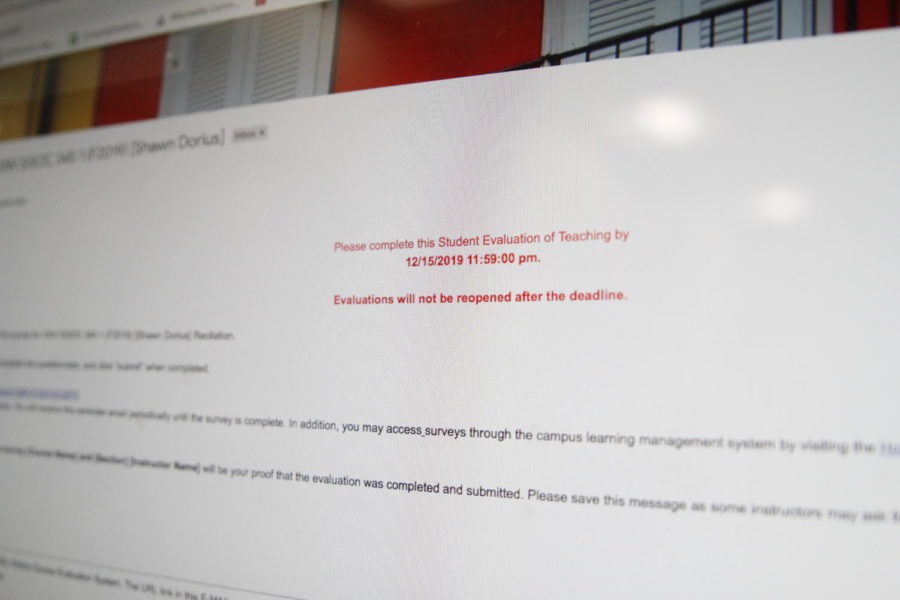End of semester brings course evaluations to student emails
Caitlin Yamada/ Iowa State Daily
As the semester draws to a close, class evaluations begin to populate students’ emails. Class evaluations provide students an anonymous way to rate their professors and give them the feedback that they need to better their courses.
December 8, 2019
At the end of each semester, Iowa State students are sent course evaluations given in two formats from all of their professors and instructors.
The evaluations consist of a series of questions regarding the classes students are finishing up. The evaluations ask about the professors or instructors and their performance, and have a place for comments to allow students to voice their opinions.
One survey includes rating on a one to 10 scale and the other asks students if they agree or disagree with a series of statements.
The information and feedback is collected and monitored. There are teachers who motivate students to fill the surveys out by offering incentives such as extra credit points.
Julia Youngberg, junior in apparel, merchandising and design, said she doesn’t fill out the surveys unless she had a terrible experience with a course.
“They’re time consuming,” Youngberg said. “I’m in the middle of finals and I don’t take the time unless I feel the teacher needs to fix the course for future students.”
Ann Luong, also a junior in apparel, merchandising and design, said she doesn’t normally see the course evaluations until Dead Week.
“Normally I don’t do them unless there’s an incentive and there’s extra credit given because it is time consuming during a busy time,” Luong said.
Luong said she sometimes questions whether the professors truly utilize the feedback from the course evaluations.
“I think they have the potential to be useful,” Luong said. “But I haven’t personally seen them be put into use since I haven’t seen change in teachers I’ve had back to back.”
Luong said she did fill out the survey evaluations when she really enjoyed a class as a way of giving the professor affirmation for the job they’ve done.
Iowa State’s Center for Excellence in Learning and Teaching website has a section on their website, titled “Strategies for Better Course Evaluations and Analyzing Student Feedback,” where professors can look up tips for receiving the student feedback.
There is also an option where professors can send out a survey earlier than the end of the semester. In addition, the website offers advice on “organizing the comments” from the feedback, so professors can sort the most frequent comments in order to improve the course.
Doreen Chung is an associate professor in the apparel, events and hospitality management department. Chung said she feels the surveys help in learning how the students feel about the course, but feels the questions are not always sufficient.
The course evaluations look the same for students in all departments of Iowa State for a variety of classes.
The comment section at the end of the survey allows for direct comments from students that can possibly answer questions not asked in the evaluation beforehand.
“The comments are super important,” Chung said. “[The information is] influenced by a variety of factors and sometimes by the grade a student is receiving. It is just one aspect of teaching performance.”
Students can find these online course evaluations in their Iowa State emails, where they will find a link to the evaluation. The emails are sent periodically until the evaluations are completed.
After the evaluations are completed, the student will receive an email for proof of completion. Some instructors may ask for the proof of completion emails.

















